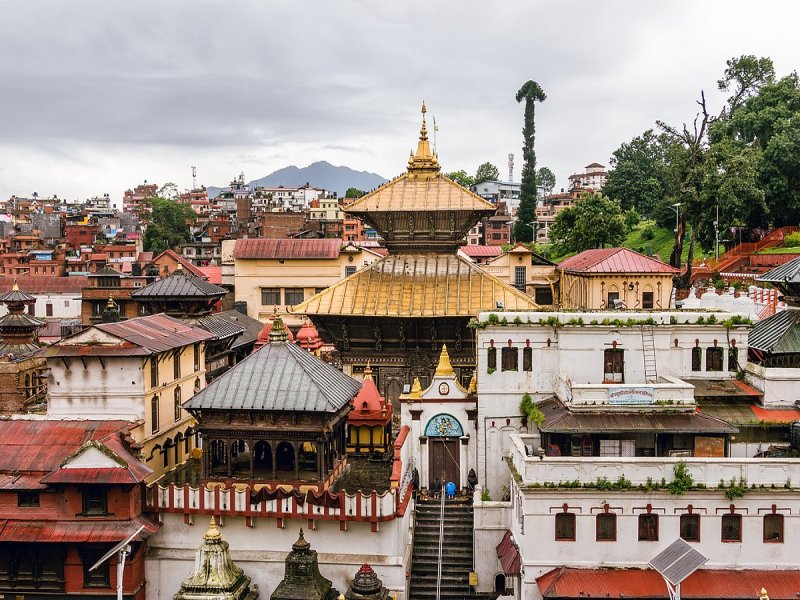Pashupatinath Temple, one of the most revered and ancient Hindu temples in the world, stands as a significant religious, cultural, and tourism landmark in Kathmandu, Nepal. Situated on the banks of the Bagmati River, this UNESCO World Heritage Site attracts millions of devotees and tourists annually, making it a cornerstone of spiritual and cultural tourism in the region.
The history of Pashupatinath Temple dates back to at least the 5th century, with legends suggesting its origins are even older. Dedicated to Lord Shiva, the temple’s sacred status draws devotees from across the globe, particularly during the Maha Shivaratri festival when the temple sees an influx of over a million visitors in a single day. The temple complex is an architectural marvel, showcasing traditional pagoda-style structures, intricate wood carvings, and sacred shrines that exude an aura of spiritual serenity.
The main temple houses a unique four-faced Shiva lingam, symbolizing Lord Shiva as the protector of all directions. This, along with the temple’s historical significance, makes Pashupatinath a must-visit destination for spiritual seekers and those interested in Hindu culture.
Beyond its religious importance, Pashupatinath Temple serves as a major attraction for cultural tourism. The temple complex, spread across a vast area, includes numerous smaller shrines, ashrams, and ghats (steps leading down to the river), where traditional rituals and cremation ceremonies are performed. These practices offer a unique glimpse into the spiritual and cultural life of Nepal, attracting tourists interested in exploring the country’s rich heritage.
The temple’s proximity to Kathmandu’s major tourist hubs, such as Thamel and Boudhanath Stupa, further boosts its appeal as a tourist destination. Visitors often combine their spiritual journey to Pashupatinath with sightseeing tours of Kathmandu Valley, creating a well-rounded cultural experience.
To accommodate the growing number of visitors, the area around Pashupatinath has seen significant improvements in tourism infrastructure. Several hotels, guesthouses, and restaurants cater to the needs of both domestic and international tourists. Additionally, guided tours are available, offering in-depth insights into the temple’s history, architecture, and rituals.
For international tourists, Pashupatinath provides a unique opportunity to witness the living traditions of Hinduism. The temple’s daily rituals, including the evening aarti (prayer ceremony) on the banks of the Bagmati River, are particularly popular. These events offer a profound spiritual experience, leaving a lasting impression on visitors.
While Pashupatinath remains a key attraction, the increasing number of visitors has raised concerns about the preservation of the temple’s heritage and the surrounding environment. The local authorities, in collaboration with cultural and tourism bodies, are working to promote sustainable tourism practices. Efforts include managing waste, preserving the temple’s structures, and ensuring that the influx of tourists does not disrupt the sanctity of the site.
Tourists are encouraged to respect the temple’s customs and traditions. As Pashupatinath is a highly revered religious site, non-Hindus are not allowed to enter the main temple, but they can explore the outer courtyard and surrounding areas. Respectful behavior and adherence to guidelines help maintain the temple’s spiritual atmosphere.
Pashupatinath Temple is more than just a religious site; it is a symbol of Nepal’s rich cultural and spiritual heritage. For tourists, a visit to Pashupatinath offers an immersive experience of the heart of Hindu traditions, architectural grandeur, and the spiritual essence of Nepal. As one of the most significant pilgrimage destinations in South Asia, Pashupatinath continues to be a beacon for spiritual seekers and a major draw for cultural tourists worldwide.
Whether you are a pilgrim seeking blessings or a traveler eager to explore Nepal’s cultural treasures, Pashupatinath Temple promises an unforgettable journey into the sacred and the sublime.






